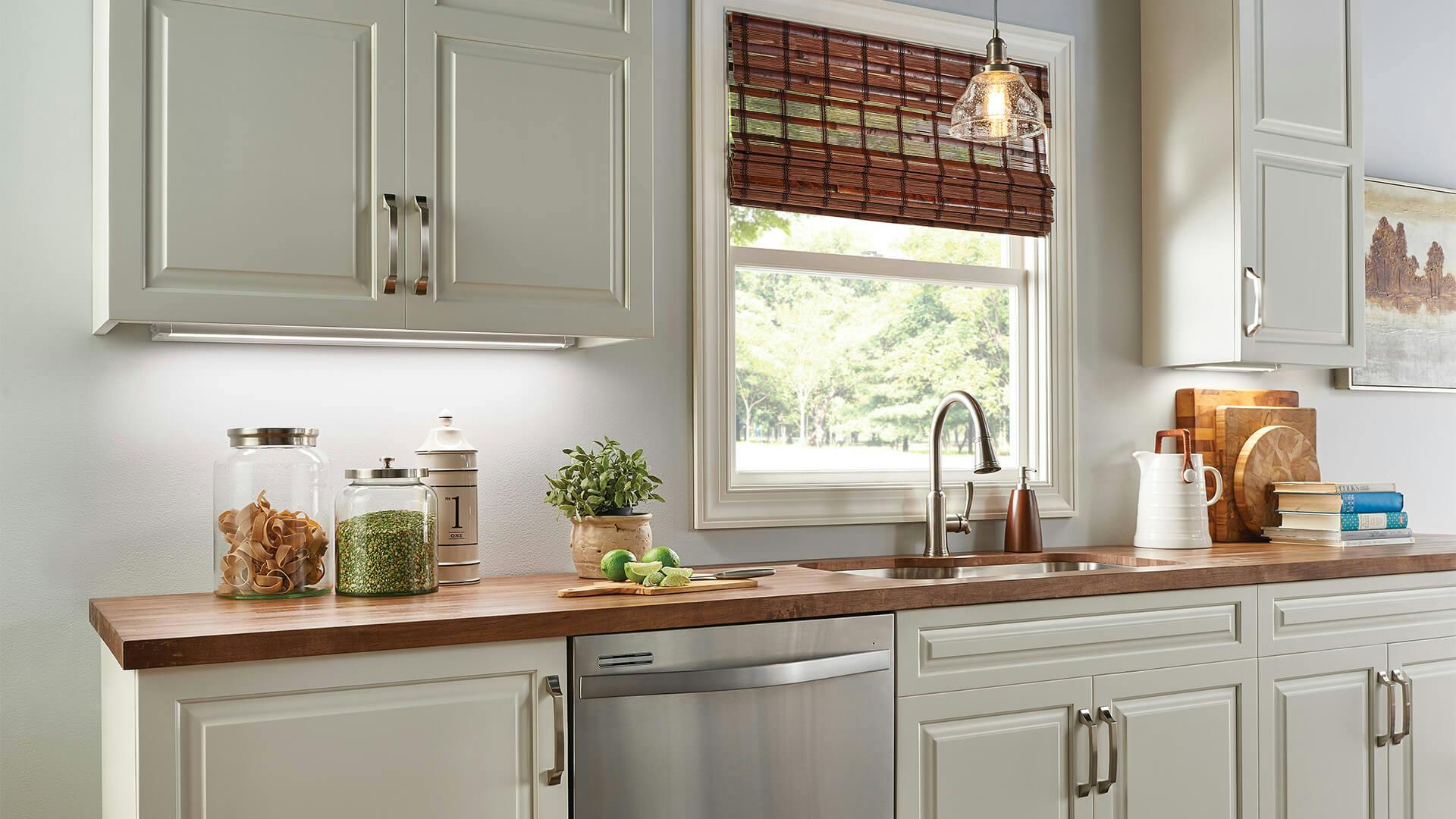
Indoor Lighting Guide
Here we shed light on some tips and tricks that will help with selection, final installation and everything in between.
Installing Cabinet Lighting

Even the most seasoned DIYer needs to think through some important questions before installing cabinet lighting. Do you have the expertise to safely install electrical components? What’s your comfort level with the complexity of the project? If hardwiring is involved, can you manage this alone?
To help you choose your installation path, we’ve created this overview. We’ve also included general installation tips. Always refer to your manufacturer's manual for detailed installation instructions.
Under Cabinet Lighting: Plug-In Installations
Cord and plug accessories are available for most systems. This may be a good choice if you don’t have electrical knowledge and don’t want to hire a professional. Or, maybe you want to make a simple update, but aren’t planning a complete remodel.
Advantages
Easy for experienced DIYers to install – no electrical wiring necessary
A good choice for single-fixture applications
No new electrical access required
Drawbacks
Design constraints
Cords will be in view
Utilizes electrical outlets that might otherwise be free
LED Under Cabinet Lighting: Direct Wire/Linkable Fixture Installations
Direct wire fixtures are self-contained, meaning all of the elements needed to operate the light are contained within a single unit. They require a separate 120V power feed from the wall, but can be linked (fixture to fixture) once the first connection is established.
During cabinet hanging, the installer will bring the electrical wiring through the back of the cabinet. Many of Kichler’s under-cabinet fixtures come with everything needed for direct wire installation
Advantages
Linking fixtures simplifies installation
Electricians/installers are familiar with these systems
Drawbacks
These fixtures are designed for under cabinet use, so the ability to install other applications is limited
LED Tape Lighting Installations
Also called “Architectural Detail Lighting,” LED tape lighting systems have the power to create a dramatic flair. The key is to hide the fixture and see the lighting effect.
Lighting systems should be planned in advance so all components are ready and available before your cabinets are installed.
Advantages
Mounts with an adhesive backing, or in a track or channel
Can be dimmable
Provides a small, compact light source
Can be cut to varying lengths
Allows for even light over longer runs
Can be used in a variety of positions and applications (toekicks, coves, trays, etc.)
Flexible design applications when paired with accessories
Can share a power source with hard strip lighting
Drawbacks
Detailed planning and installation are needed for best results
Hard Strip Lighting Installations
Hard strips feature a rigid exterior and quick connect end caps. This makes them easy to install with angled clips in linear applications. They have a lower profile than traditional under cabinet lighting, but a higher profile than LED tape lighting. Similar to tape lighting, the key is to hide the light and see the effect.
Advantages
Easy to clean
Can be dimmable
Rigid design enhances durability
Can be used in a variety of positions and applications
Snap-together connectivity
Can share a power source with LED tape lighting
Drawbacks
Careful planning is needed for best results
Come in predetermined lengths (vs. LED tape, which can be cut)
General Installation Tips
If you don’t have experience with lighting installation or electrical wiring, it’s a good idea to get help from a professional. If you are doing it yourself, always put safety first and follow safe electrical installation standards.
Read the manufacturer’s instructions before getting started
Turn off your power source at the electrical or circuit box during installation
Avoid water
Don’t overload an outlet
Always use the recommended wattage bulbs in fixtures
If you’re working up high, such as when installing above-cabinet lighting, practice ladder safety. Even better, have someone there to help